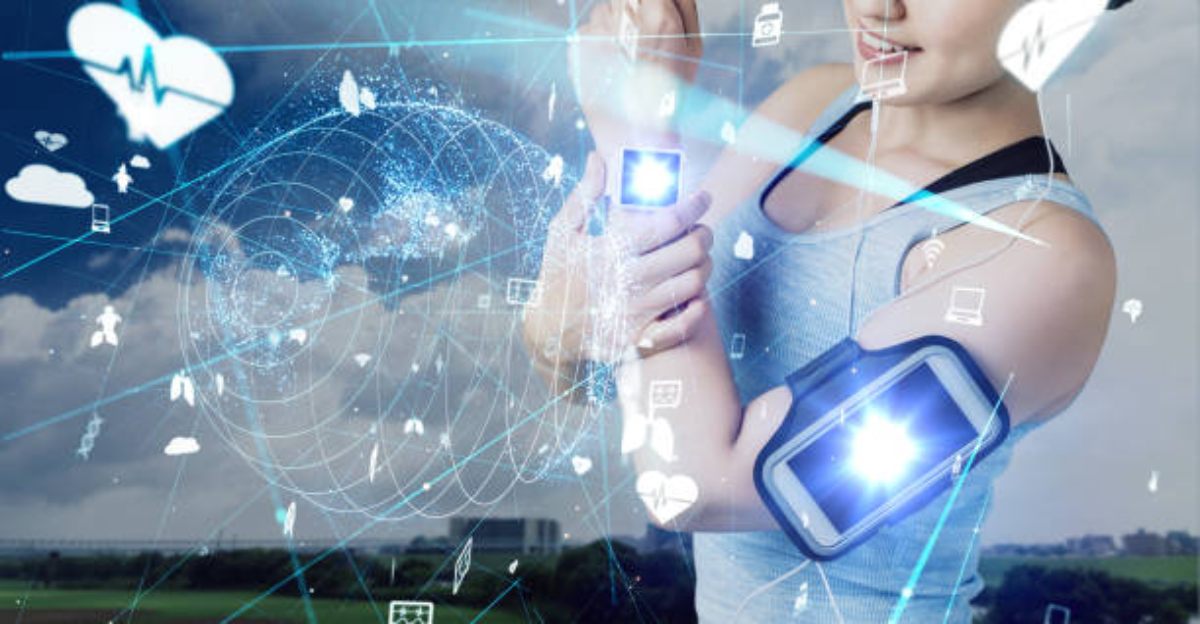Personalized patient care is a healthcare approach that tailors treatment plans to each patient’s unique needs, health status, and preferences. This method has gained popularity in recent years as it improves patient satisfaction, lowers healthcare costs, and enhances patient outcomes. Wearable technology, on the other hand, refers to electronic devices worn on the body that can track various health metrics, monitor physical activity, and provide other health-related data.
Integrating personalized patient care with wearable technology has the potential to revolutionize healthcare delivery by offering real-time, precise, and ongoing monitoring of patients’ health status. This article explores the potential of wearable technology in personalized patient care.
Table of Contents
Benefits of Wearable Tech in Personalized Patient Care
Wearable technology provides numerous advantages, such as:
#1 Remote health condition monitoring
Wearable technology allows for remote monitoring of health conditions, which can be beneficial for patients with chronic diseases or those needing constant monitoring. Continuous glucose monitors (CGMs), for example, can track blood sugar levels in diabetic patients and alert them when their glucose levels are too high or too low.
Healthcare providers can use this information to modify medication dosages or suggest lifestyle changes as needed. Remote monitoring can also help patients manage their health from home and decrease the number of hospital visits.
#2 Real-time patient health data tracking
Wearable technology can track various health metrics like heart rate, blood pressure, oxygen saturation, and respiratory rate in real-time. This data offers insights into a patient’s health status, which can be used to make informed decisions about their care.
Real-time tracking can also warn healthcare providers of potential health issues before they worsen, allowing for early intervention and treatment.
#3 Enhanced medication adherence
Wearable technology can improve medication adherence by reminding patients to take their medication on schedule. For instance, a smartwatch can send reminders to patients to take their medication at specific times during the day.
Some wearable devices can also track medication intake and inform healthcare providers when a patient misses a dose.
#4 Greater patient engagement and motivation
Wearable technology can boost patient engagement and motivation by giving patients real-time feedback on their health status and progress towards their health goals.
Fitness trackers can track physical activity and provide feedback on steps taken, calories burned, and distance covered. This feedback can motivate patients to increase their physical activity levels and achieve their health goals.
#5 Improved diagnosis and treatment accuracy
Wearable technology can enhance the accuracy of diagnosis and treatment by providing healthcare providers with real-time, objective data on a patient’s health status.
This information can complement subjective data obtained during physical examinations and enable healthcare providers to make more informed decisions about a patient’s care.
#6 Reduced healthcare costs
Wearable technology can lower healthcare costs by enabling remote patient monitoring, decreasing the number of hospital visits, and improving medication adherence. Remote monitoring can also lessen the need for costly interventions and procedures by facilitating early intervention and treatment.
Types of Wearable Tech Used in Personalized Patient Care
Smartwatches
These devices can track various health metrics like heart rate, blood pressure, and physical activity. They can also provide notifications and reminders to take medication, attend appointments, or perform other health-related tasks.
The Apple Watch is a popular smartwatch that can track physical activity, monitor heart rate, and provide notifications and reminders related to health and wellness. It also has features such as fall detection and an electrocardiogram (ECG) function, which can detect irregular heart rhythms.
Fitness trackers
These devices are designed to track physical activity, such as steps taken, calories burned, and distance traveled. They can also monitor sleep patterns and heart rate, providing insights into overall health and wellness.
Fitbit is a popular fitness tracker that can track physical activity, monitor sleep patterns, and provide insights into overall health and wellness. It also has features such as heart rate monitoring and menstrual cycle tracking.
Continuous glucose monitors
These devices monitor blood glucose levels in diabetic patients and can alert patients and healthcare providers when glucose levels are too high or too low, enabling early intervention and treatment.
The Dexcom G6 is a continuous glucose monitoring (CGM) system that can monitor blood glucose levels in diabetic patients. It can alert patients and healthcare providers when glucose levels are too high or too low, enabling early intervention and treatment.
Remote patient monitoring devices
These devices can track various health metrics, such as blood pressure, heart rate, and oxygen saturation, and transmit this data to healthcare providers. They can be particularly helpful for patients with chronic diseases or those who require constant monitoring.
The Philips Wearable Biosensor is a remote patient monitoring device that can track various health metrics, such as heart rate, respiratory rate, and body position. It can transmit this data to healthcare providers, enabling remote monitoring of patients with chronic diseases or those who require constant monitoring.
Other types of wearable technology
Other types of wearable technology used in personalized patient care include smart clothing, which can track physical activity and vital signs, and implantable devices, such as pacemakers, which can monitor heart function.
Other examples of wearable technology used in personalized patient care include the Samsung Galaxy Watch, Garmin Vivosmart, and Medtronic MiniMed insulin pump.
Challenges of Wearable Tech in Personalized Patient Care
Despite the numerous advantages of wearable technology in personalized patient care, there are several challenges that must be addressed to fully harness its potential.
The challenges associated with wearable technology in personalized patient care not only affect healthcare providers and patients but also have significant implications for healthcare tech startups and companies. Let’s discuss how these challenges impact these businesses:
- Data privacy and security: Healthcare tech startups and companies must prioritize data privacy and security when developing wearable devices. Failure to address these concerns may lead to loss of customer trust, legal issues, and potential damage to the company’s reputation. Startups and companies must invest in strong encryption protocols, ensure compliance with data protection regulations, and address potential vulnerabilities in their devices and systems to maintain a competitive edge in the market.
- Integration with existing healthcare systems: For healthcare tech startups and companies to succeed, their wearable devices must be interoperable with various electronic health record (EHR) systems, telemedicine platforms, and other healthcare technologies. Achieving seamless integration can be a complex and resource-intensive process, requiring close collaboration with healthcare providers and other stakeholders. Companies that are unable to effectively integrate their devices may struggle to gain market traction.
- Reliability and accuracy of data: The success of healthcare tech startups and companies hinges on the reliability and accuracy of the data collected by their wearable devices. Inaccurate or inconsistent data can lead to incorrect diagnoses or treatments, compromising patient safety and negatively impacting the company’s credibility. Startups and companies must invest in research and development to enhance the accuracy and reliability of their devices.
- Cost of wearable technology: The high cost of wearable technology can limit access for patients who cannot afford it, which may hinder market growth for healthcare tech startups and companies. To remain competitive, companies need to find ways to make their devices more affordable and accessible, including exploring cost-effective manufacturing processes and offering flexible pricing options for different market segments.
- User adoption and engagement: Healthcare tech startups and companies must ensure that their wearable devices are user-friendly and appealing to both patients and healthcare providers. This involves developing intuitive user interfaces, providing educational resources, and offering ongoing support to help users understand and engage with the technology. Companies that fail to address user adoption and engagement may struggle to penetrate the market and achieve long-term success.
Future of Wearable Technology
The future of wearable technology in personalized patient care is promising, with numerous opportunities for growth and development. Advancements in wearable technology, such as improved accuracy and reliability, increased use of AI and ML, and integration with telemedicine and virtual care, will continue to enhance its capabilities.
Wearable technology has the potential to transform healthcare delivery by providing real-time, accurate, and continuous monitoring of patients’ health status. As healthcare providers and patients become more familiar with wearable technology and its benefits, its adoption is likely to increase, leading to better patient outcomes, reduced healthcare costs, and enhanced patient satisfaction.
Conclusion
As wearable technology continues to evolve and improve, its potential to revolutionize healthcare delivery is immense. Healthcare providers and patients must work together to embrace wearable technology in personalized patient care to fully realize its benefits.
In the coming years, we can expect to see further advancements in wearable technology, such as the development of more specialized devices for specific health conditions, increased battery life, and improved user interfaces. Additionally, the integration of wearable technology with other emerging technologies, like virtual and augmented reality, may lead to even more innovative solutions in personalized patient care.
To harness the full potential of wearable technology in personalized patient care, it is crucial for healthcare providers, technology developers, and policymakers to collaborate and address the challenges that still exist. This includes focusing on research and development to enhance the accuracy and reliability of wearable devices, addressing data privacy and security concerns, and working to make these technologies more affordable and accessible for patients from all socioeconomic backgrounds.
TheITbase
Related posts
Hot Topics
Metaverse Platforms for Virtual Workspaces
Ever felt like your office is stuck in the Stone Age? Tired of endless Zoom calls that feel about as…
IoT Protocols: The Language of Smart Devices
Ever wonder how your smart fridge talks to your phone? Or how does your fitness tracker know to buzz when…



